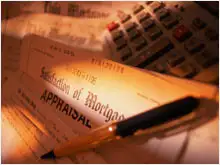Beware a mortgage-rate spike this spring

A looming shift in Federal Reserve policy could send the 30-year fixed mortgage to 6% or higher, up from Monday’s rock-bottom rate of 5.02%. For all the hullaballoo about the stimulative impact of last week’s decision to extend the $8,000 First-Time Home Buyer Tax Credit and create a $6,500 credit for current homeowners, a sharp rise in the bellwether mortgage rate could muck up a housing recovery.
For the past year the Federal Reserve’s voracious $1.25-trillion purchase program of mortgage-backed securities has effectively pushed the 30-year conforming fixed-rate mortgage lower than it would normally be. Typically the conforming FRM is about 25 basis points lower than the rate on a jumbo mortgage. According to Bankrate's latest weekly survey, the difference is more than one percentage point (6.24% vs. 5.19% as of Nov. 10).
But the Federal Reserve has signaled that it intends to wind down its purchase program by the end of the first quarter of 2010. Analyst Meredith Whitney recently dubbed the Fed’s “Great Exit” the biggest risk for banks and the markets over the next four months. And consumers.
Absent another big buyer (or set of buyers) stepping up and taking the Fed’s place, rates would likely rise. If the jumbo/conforming spread reverts to its historic norm, we’re looking at a 30-year fixed rate mortgage closer to 6% based on today's levels. That could translate into a decline of 10% or so in home buyers' purchasing power. A $300,000 mortgage at 5.02%, for example, works out to about $1,614 a month. At 6% you’d need to drop the mortgage amount to less than $270,000 to keep the monthly payment at $1,614. As Amanda Gengler points out in her 2010 Housing Outlook, prospective buyers and refinancers should look to lock in a rate sooner rather than later.
Add More Money to your favorite RSS reader. Subscribe at http://rss.cnn.com/moneyfeatures.rss.